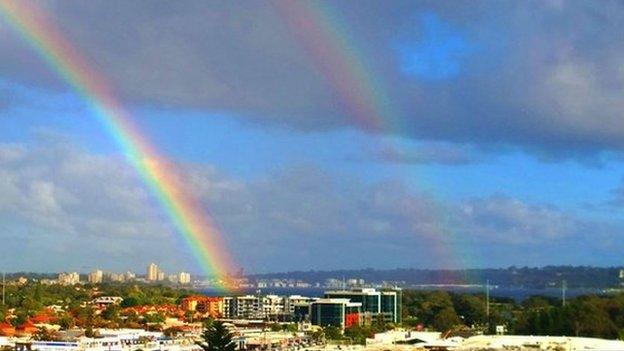Rainbows and moon bows - what's the secret?
- Published
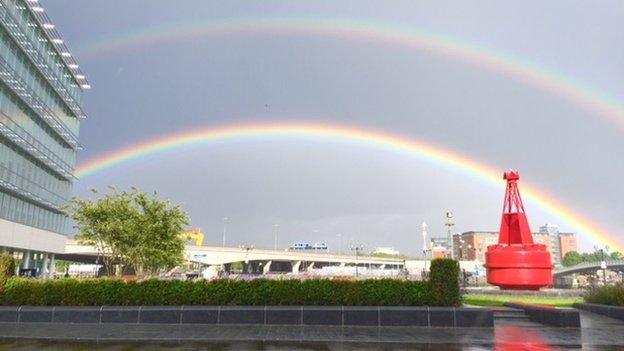
Double the magic: Lucien McManus submitted this picture taken in Belfast
It's the last day of summer and what a summer it has been.
No heat wave - that's for sure - but there have been plenty of showers.
The result of showers will often mean pretty rainbows to look at.
So how does a rainbow form?
A rainbow is an arc-shaped spectrum of light caused by the reflection of sunlight in water droplets. The sun's rays hit the water droplet which reflects some of the light back.
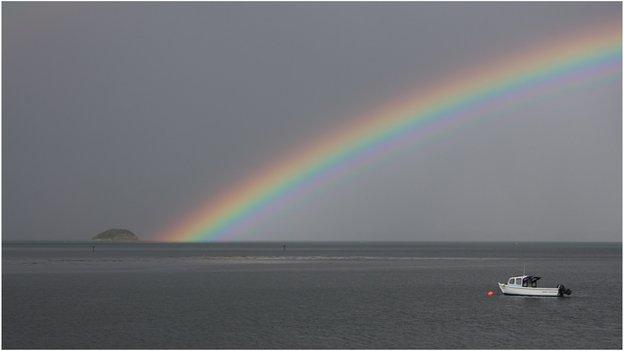
Phil Posnett found a rainbow to lighten up a grey day on Strangford Lough
The water droplets are usually rain drops, but could also be spray from a waterfall, a fountain, or even fog.
To see a rainbow, you must have the sun shining behind you and the water droplets in front of you.

Evelyn McCullough took this photograph at Ballintoy
Sunlight is made up of a spectrum of different colours that look white when we see them all mixed together.
These colours get reflected by slightly different angles inside the raindrop, so they get spread out.
This is why we see the familiar colours of the rainbow which of course we all remember from school science classes ROYGBIV - red, orange, yellow, green, blue, indigo and violet.
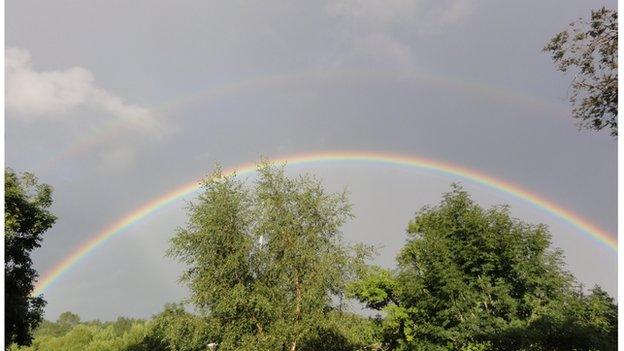
A perfect arch captured at Castleroe by Gary O'Neill
Sometimes we can see a second, larger, rainbow outside the main one. This is called a secondary rainbow. It is formed by rays of light that are reflected inside the raindrop twice.
If you look carefully, you will see that the extra reflection means that the colours in the secondary rainbow are in the opposite order to the first, or primary, rainbow.
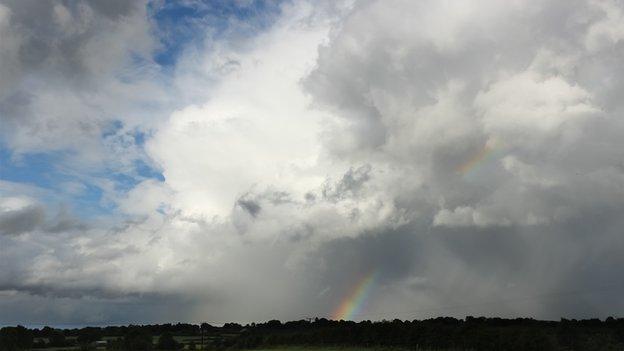
Martin McKenna took this dramatic photograph in Maghera
The secondary rainbow is also less bright because the light is being spread over a larger area of the sky.
Although quite rare, it is possible to see a rainbow at night.
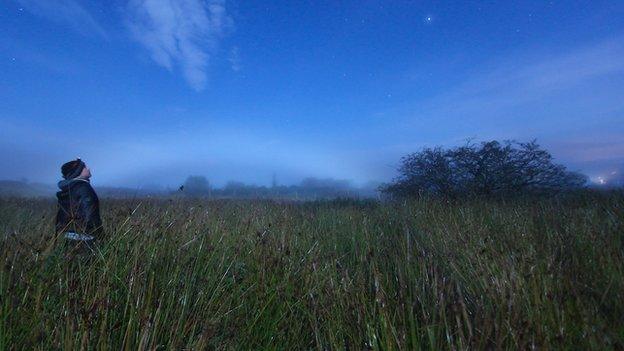
This lunar fog bow, or moon bow, was spotted in Maghera by Martin McKenna
If the moon is shining brightly enough, light can be reflected through water droplets in the same way that a rainbow is created.
As the moon is much less bright than the sun, moon bows are much fainter than day-time rainbows.
- Published4 August 2015
